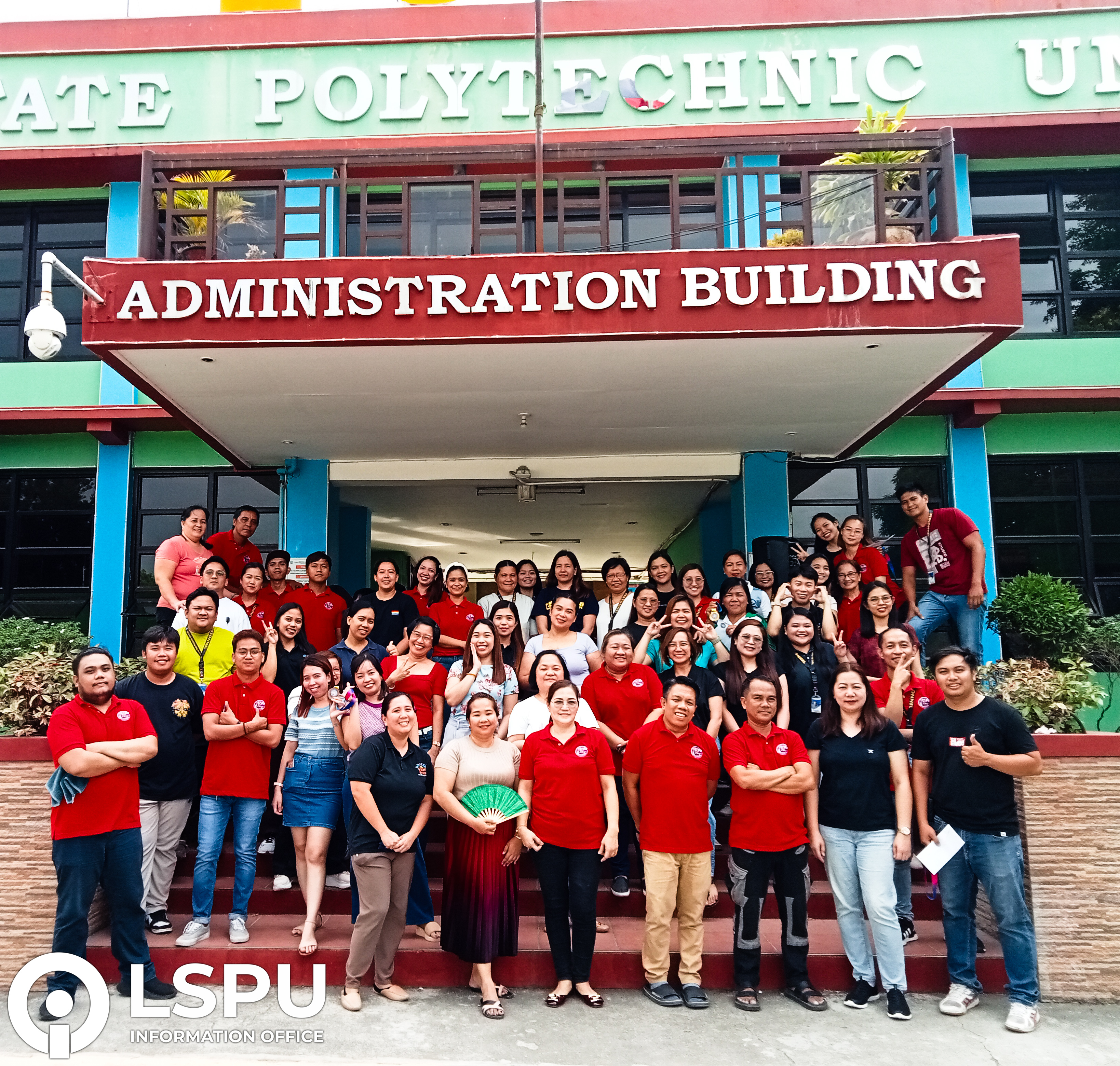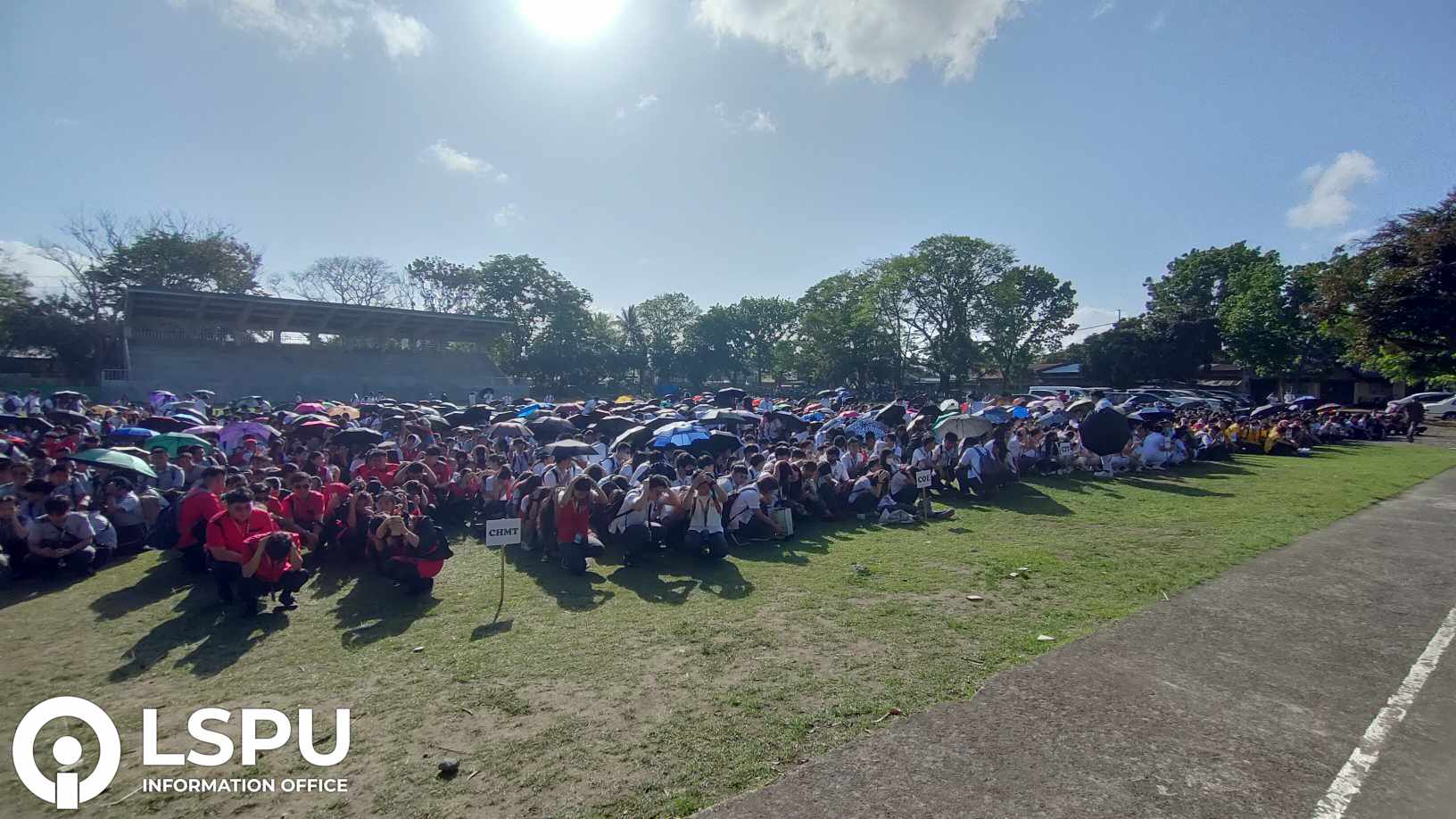Mushroom production has long been an industry in the Philippines and mostly in abroad. This technology gained its popularity among farmers and food enthusiasts due to its social, economic and environmental impact. With this, the Laguna State Polytechnic University (LSPU) has also engaged itself in the production of oyster mushroom thru the initiatives of Dr. Lolita D. Viyar, a professor of the College of Agriculture of LSPU Siniloan campus and the support given by the university administration headed by Dr. Nestor M. de Vera, LSPU President. According to her, the production of oyster mushroom started as a laboratory exercise of her students in the Bachelor of Science in Agriculture program. They were doing hands - on procedure on the production of pure culture, spawn grains up to the preparation of substrates. The project officially commenced after the approval of her project proposal on the setting up of oyster mushroom production in LSPU,Siniloan Campus. The potential of the proposal was recognized by the LSPU administration and gained fund support for the construction of one growing house.
During the implementation of the project, sawdust from the furniture and woodcarving shops in the Municipality of Paete was used as the main ingredients in the preparation of substrate for the oyster mushroom. Pure culture or mother culture of mushroom were prepared using a prototype isolation chamber. This was used to pursue the project despite of the limitation of laboratory facilities and equipment. Before producing fresh oyster mushroom, various step by step procedures which were divided into four phases were done. First, mother culture and spawn grains must be prepared. A small tissue of oyster mushroom was inoculated into prepared PDA or potato dextrose agar. This was incubated to allow the growth of the mycelia on the top of the media. After 1 to 2 weeks of incubation, a small cut of the pure culture will be transferred or inoculated to a bottle containing sterilized grain such as sorghum or corn to multiply the culture and for easier inoculation into the substrate bags. Second was the preparation of substrate bags. Collected sawdust was mixed with other ingredients like lime and rice bran in a proportionate ratio. The mixture was place in a polypropylene bag and pasteurized thru steaming. Third, the prepared spawn grain was further inoculated into the steamed bags in a clean and sanitized room. This was then incubated for about 15 to 20 days before hanging in the growing house. Fourth, the growing house was maintained clean to avoid the contamination of fruiting bags hanged. Regular irrigation was done providing moisture in the bags for the growth and development of oyster mushroom.
Presently, the project is producing 5 to 10 kilograms per day with a selling price of 100 pesos per kilogram. These are sold to faculty members and personnel of the University and to the local market of Siniloan. A total of 2,000 fruiting bags are prepared every month. On the other hand, to promote the product, the team of Dr. Viyar joined various product exhibits in the municipal and regional level. With this endeavor, the demand for oyster mushroom tremendously increased that sometimes they can not satisfy the demand. According to Dr. Viyar, the supply of oyster mushroom is very minimal at present. This calls for an expansion of production capacity.
Focusing on the four fold function of the University, the concept of LSPU in producing oyster mushroom is also shared to the community thru extension activities. In coordination with different LGUs and GOs, set up of oyster mushroom production were established in different areas in the municipality and neighboring towns. These endeavor greatly generated livelihood for the communities. With the question on what will happen to the harvest of the partner communities if all of them will produce oyster mushroom?, Dr. Viyar optimistically explained that the project does not only focused on production of fresh oyster mushroom. Other components of the project will develop different products that will utilize the harvest. Products such as mushroom tempura, kroepek, pasta, chips and other by products were already developed by the team. Other R&D conducted was the evaluation of the performance of Pluerotussp. on different agricultural waste such as banana leaves and stalks, sugarcane bagasse, rice straw and others. Search for alternative grains for sorghum seeds as substrate for the multiplication of spawn was also determined. Besides oyster mushroom, Dr. Viyar is also working on the production of other mushroom species like shiitake mushroom, button mushroom and milky mushroom, all have high market values. Other than the production aspect, the utilization of “used up” or spent mushroom substrates were evaluated for their efficacy as bio-fertilizer and substrates invermi composting.
In their effort to intensify mushroom production and utilization, Dr. Viyar’s team in coordination with the University’s Research and Development Office is planning to establish a demonstration farms in strategic areas in Laguna. This will serve as show-window for the technology and boost up the production of oyster mushroom thereby helping generate additional livelihood enterprises inrural communities and hopefully make Laguna as the mushroom capital of the country. Furthermore, the technology and the ability of Pleurotussp has a great impact in turning bulk of agriculture and industrial waste into opportunities, Dr Viyar says.
By: Harvey Dulay& Carlos Andam

















